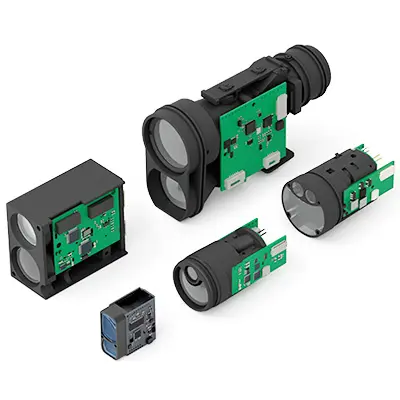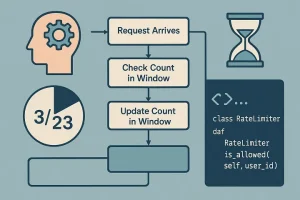Understanding Payload Stabilization & Distance Correction in Modern Measurement Systems
Payload stabilization and distance correction are critical technologies in various industries, ranging from aerospace to robotics and industrial automation. At their core, these concepts address the challenge of maintaining accuracy and precision in measurements and operations despite movement, vibration, or environmental interference. One of the key instruments enabling these advances is the laser distance sensor, which has revolutionized how distances are measured with unprecedented speed and accuracy.
The Role of a Laser Distance Sensor in Payload Stabilization
A laser distance sensor is a sophisticated device that uses laser technology to measure the exact distance between the sensor and an object or surface. Unlike traditional mechanical methods, laser sensors provide rapid, non-contact, and highly precise measurements, which are invaluable for systems requiring constant adjustments or monitoring.
In payload stabilization, especially in aerial or spacecraft applications, the payload often experiences movements caused by external forces such as wind or turbulence. These motions can lead to inaccurate positioning and data collection. By integrating laser distance sensors into the payload system, real-time distance measurements can be continuously monitored. The sensor detects even slight shifts in position, enabling control systems to adjust actuators or stabilizers to maintain the payload’s exact placement or orientation.
For example, in drone technology, payload stabilization ensures that cameras or sensors remain steady despite the drone’s motion. A laser distance sensor can measure the distance between the payload and a reference point, feeding data to the flight controller, which then compensates for any drift or tilt. This synergy of technologies ensures sharp images, accurate scanning, or consistent treatment delivery in medical robotics.
Why Distance Correction is Vital
Distance correction refers to the process of adjusting measurements to counteract errors or distortions caused by dynamic movement or environmental factors. Since payloads can move unpredictably, the raw distance information retrieved by sensors may include noise, inaccuracies, or offsets. Effective distance correction algorithms use the data from laser distance sensors alongside inertial measurement units (IMUs), gyroscopes, or accelerometers to filter out these discrepancies.
One practical instance of distance correction is in autonomous vehicles. These vehicles rely heavily on laser distance sensors (often referred to as LiDAR systems) to detect obstacles and navigate safely. Sudden vibrations or uneven terrain can affect sensor readings, potentially compromising safety. Distance correction mechanisms integrate sensor fusion techniques, combining multiple sensor inputs to refine distance data and provide a reliable spatial map. This corrected data ensures the vehicle can accurately perceive its surroundings and react accordingly.
Applications of Payload Stabilization and Distance Correction
Aerospace and Satellite Systems
In satellites and space exploration vehicles, maintaining the precise orientation and position of scientific instruments or communication payloads is crucial. Laser distance sensors are used to constantly monitor the payload’s position relative to the satellite’s frame or the Earth below. Distance correction algorithms help negate microgravity-induced shifts or mechanical vibrations from onboard equipment, keeping the mission data accurate and intact.
Industrial Automation and Robotics
Robots working in manufacturing plants must perform repetitive tasks with exact precision. Payloads here might include welding heads, grippers, or inspection tools. Any deviations caused by mechanical backlash or conveyor belt vibrations can lead to production errors. Using laser distance sensors, these robotic systems can dynamically measure and compensate for tiny positional errors in real time. This enhances product quality and reduces waste.
Surveying and Construction
Laser distance sensors form the backbone of many modern surveying tools, such as total stations and laser scanners. Payload stabilization techniques ensure that measurements taken from moving vehicles, cranes, or drones remain stable despite external disturbances. Distance correction, in turn, improves data reliability by compensating for environmental factors like temperature fluctuations or surface reflectivity variations.
Challenges and Future Directions
While laser distance sensors bring considerable advantages, integrating them within payload stabilization and distance correction systems comes with challenges. Sensor calibration must be meticulously maintained to prevent drift over time. Environmental factors such as fog, dust, or reflective surfaces can sometimes interfere with laser signals, affecting measurement quality.
Emerging research focuses on combining artificial intelligence and machine learning with sensor data to improve distance correction algorithms. These intelligent systems can adapt to changing conditions more rapidly, optimizing the accuracy of payload stabilization in real time. Furthermore, miniaturization and cost reduction in laser sensor technology are enabling their use in smaller, more agile platforms.
Conclusion
Payload stabilization and distance correction are fundamental to maintaining accuracy and efficiency in any system where movement or environmental factors threaten measurement integrity. Thanks to advancements in laser distance sensor technology, industries across the spectrum can now achieve higher precision, reliability, and operational safety. As sensor technologies continue to improve and integrate with smarter control systems, the scope and effectiveness of payload stabilization and distance correction will undoubtedly expand, driving innovation in aerospace, robotics, industrial automation, and beyond.




